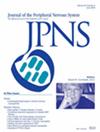SARM1 Inhibition in Three Mouse Models of Charcot-Marie-Tooth Disease
Abstract
Background
Charcot-Marie-Tooth (CMT) disease can be caused by mutations in over 100 different genes, most of which lead to demyelination (type 1) or degeneration (type 2) of peripheral motor and sensory axons. SARM1 is a protein involved in the active process of Wallerian degeneration after axonal injury. Inhibition of SARM1 protects against axon degeneration following injury or in cases such as chemotherapy-induced peripheral neuropathy. However, the effects of SARM1 inhibition on axon degeneration in genetic diseases such as CMT are less clear.
Aims
Here we tested whether SARM1 inhibition may be of benefit in three different mouse models of axonal CMT: GarsETAQ/CTM2D, NeflN98S/CMT2E, and Ighmbp2Y918C/CMT2S.
Methods
For these proof-of-concept studies, mice were treated as neonates with an AAV9 to deliver a dominant negative SARM1 construct (dnSARM1) to the nervous system by intracerebroventricular injection. At ages appropriate for each mouse model, animals were then evaluated with a combination of behavioral, neurophysiological, and histological outcomes.
Results
We reproduced the protective effects of the dnSARM1 construct in positive control experiments following sciatic nerve crush. However, we did not see a change in the phenotypes of any of the CMT mouse models examined. The neuropathy-related phenotypes neither worsened nor improved. Wild-type littermate controls treated with the AAV9 dnSARM1 had minor reductions in body weight and variable changes in motor performance compared to untreated controls, but no deficits by neurophysiology or histology.
Interpretation
Inhibiting SARM1 using a virally delivered dominant negative construct was not efficacious in any of the three mouse models of CMT we tested. These mouse models were chosen for their relevance to the human disease and their prominent axon degeneration, and not for metabolic changes that would suggest SARM1 as a therapeutic target. SARM1 inhibition may remain an option for some forms of CMT, but a method for prescreening CMT subtypes to predict efficacy is needed.

 求助内容:
求助内容: 应助结果提醒方式:
应助结果提醒方式:


